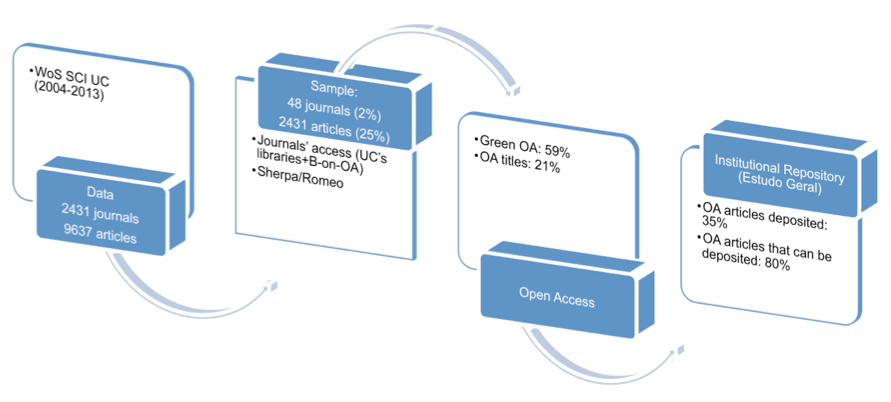Changes brought about by the Internet to Scholarly Communication and the spread of Open Access movement, have made it possible to increase the number of potential readers of published research dramatically. This two-phase study aims, at first, to assert the satisfaction of the potential for increased open access to articles published by authors at the University of Coimbra, in a context when there was no stimulus for the openness of published science other than an institutional mandate set by the University policy on Open Access (“Acesso Livre”). The satisfaction of the access openness was measured by observing the actual archiving behavior of researchers (either directly or through their agents). We started by selecting the top journal titles used to publish the STEM research of the University of Coimbra (2004-2013) by using Thomson Reuters’ Science Citation Index (SCI). These titles were available at the University libraries or through online subscriptions, some of them in open access (21%). By checking the journals' policy at the time regarding self-archiving at the SHERPA/RoMEO service, we found that the percentage of articles in Open Access (OA) could rise to 80% if deposited at Estudo Geral, the Institutional Repository of the University of Coimbra, as prescribed by the Open Access Policy of the University. As we concluded by verifying the deposit status of every single paper of researchers of the University that published in those journals, this potential was far from being fulfilled, despite the existence of the institutional mandate and favorable editorial conditions. We concluded, therefore, that an institutional mandate was not sufficient by itself to fully implement an open access policy and to close the gap between publication and access. The second phase of the study, to follow, will rescan the status of published papers in a context where the Portuguese public funding agency, the Fundação para a Ciência e a Tecnologia, introduced in 2014 a new significant stimulus for open access in science. The FCT Open Access Policy stipulates that publicly funded published research must be available as soon as possible in a repository of the Portuguese network of scientific repositories, RCAAP, which integrates the Estudo Geral.

